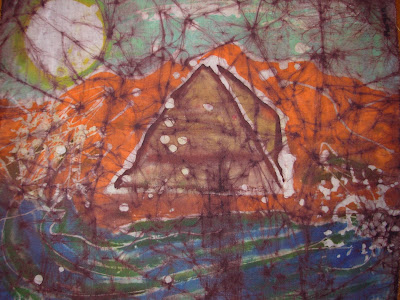Notes From Chapter 6
I will not be outlining this chapter. I have read it and digested the information. My notes are the highlights of what I have taken from it.
This chapter begins with the explanation of how art is pertinent to the real world. Even police officers are being trained with visual art in order to help them to develop skills to "see the big picture."
Visual imagery is how we think. People use words as a tool to describe the imagery that we have in our minds. Language was developed for the sole purpose of communicating the pictures in our heads.
The Cerebral cortex is a very fascinating part of our anatomy. We have the ability to process tremendous amounts of information, and I was not at all surprised to learn in this chapter that an extremely substantial portion is assigned to the processing of visual images. Increased exposure to thought provoking visual stimuli is positively linked to literary development.
Indeed the age old saying that "a picture is worth a thousand words" rings true. The more stimulating pictures that our students are exposed to the more words they will be forced to access or acquire to express or explain. With that 30x larger capacity to analyze images over sound the students will be effectively using a larger percentage of their brain than if they were simply lectured.
Art activates emotions. Emotion is the most underrated part of what makes all of us human. Things have no meaning to us unless we can personally relate them. That is the purpose of Emotion and a primary function of visual art.
Higher level thinking develops from exposure to art at any age. Even infants who are exposed to a high level of visual stimuli are experiencing higher level thinking.
Aesthetic development occurs in stages:
- favorites-appealing to the viewer on some level
- subject matter- the emphasis of the art.
- Emotions- the feelings that the artwork evokes in those who view it
- Style and form- the methods and rules that the artist followed when creating the work
- Autonomy- essentially the meaning that the art holds for the viewer
Artwork is inherently unique and singular. By creating art students are fostering a sense of individual self that cannot be equalled. This uniqueness and singularity is very essential for the development of a fully functioning person. Unless a person feels that they are one of a kind they will never achieve self actualization.
Producing art provides students with the challenges of focus, concentration, and discipline. To do their personal best at an art project a person has to immerse themselves in it. I believe this is the specific reason why I am so drawn to art. Each piece of artwork is a reflection of it's creator in some way. I am particularly egotistical because I quite enjoy all of the little mirrors that I have created.
My favorite part of this chapter was the single idea that art naturally integrates itself into other curricular areas. When developing my integration ideas I found that the subject of the art is the point of integration. Art is not limited to math or writing or computers. Each subject could be improved by the integration of art by simply allowing the area to be described by it.














.jpg)

